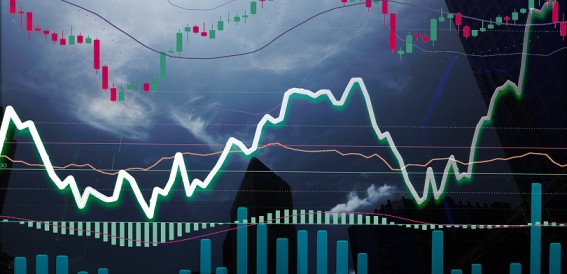Investing in metals and mining provides investors with unique access to global commodity markets. This article examines the dynamics of this sector in detail, providing insights into the key drivers of the metals and mining industry and guiding investors on how to navigate this challenging market.
What are Metals and Mining Stocks?
Metals and mining stocks represent companies’ integral to the extraction, processing, and production of metals and minerals essential for various industries. Mining firms engage in exploration and extraction, covering base metals like copper and precious metals like gold. Steel producers play a key role in transforming raw materials into steel, vital for construction and manufacturing. Aluminum producers refine bauxite into a lightweight metal crucial for aerospace and automotive industries. Copper producers contribute to applications in electrical systems and construction. These stocks are highly influenced by commodity prices, global demand dynamics, technological advancements, and geopolitical factors. The sector’s performance is cyclical, demanding careful assessment of commodity trends, economic indicators, and company financials for informed investment decisions in this volatile and strategically significant industry.
Begin your investing journey today. Your Demat account is the first step.
Top 10 Metals & Mining Stocks in 2025
The Indian metals and mining industry is characterized by the presence of several major players contributing significantly to the country’s economic growth. These companies are engaged in diverse segments, from mining and extraction to processing and manufacturing. Here are some of the major players in the Indian metals and mining industry:
-
Vedanta Limited
Vedanta is a diversified natural resources company with a strong presence in the metals and mining sector. It operates in zinc, lead, silver, copper, iron ore, aluminum, and oil and gas. Vedanta’s mining operations are spread across various states in India, and the company is known for its commitment to sustainable development.
-
Hindalco Industries Limited
Hindalco is a leading player in the aluminum and copper segments. It is part of the Aditya Birla Group and has a robust presence in both primary aluminum production and downstream products. Hindalco’s operations include mining bauxite, refining alumina, and producing aluminum and copper products.
-
Tata Steel Limited
Tata Steel is a globally recognized steel producer with a significant presence in India. The company is involved in mining iron ore, coal, and other minerals, and it operates integrated steel plants, producing a diverse range of steel products for various industries.
-
Steel Authority of India Limited (SAIL)
SAIL is one of the largest state-owned steel producers in India. It operates multiple integrated steel plants and is engaged in the mining of iron ore, coal, and other raw materials. SAIL plays a crucial role in meeting the country’s growing demand for steel.
-
Coal India Limited
Coal India is the world’s largest coal mining company and a major player in the Indian mining sector. It is responsible for the majority of the country’s coal production, catering to the energy needs of various industries.
-
NMDC Limited
NMDC is a public sector enterprise involved in the exploration and production of iron ore. It is one of the leading producers of iron ore in India and operates mines in Chhattisgarh and Karnataka.
-
Hindustan Zinc Limited
Hindustan Zinc, a subsidiary of Vedanta Limited, is a major player in the zinc and lead segment. The company is a leading producer of these metals and operates mines in Rajasthan.
-
National Aluminium Company Limited (NALCO)
NALCO is a public sector company involved in the production of alumina and aluminum. The company’s integrated operations include bauxite mining, alumina refining, and aluminum smelting.
-
JSW Steel Limited
JSW Steel is a leading player in the steel industry, with a focus on integrated steel manufacturing. The company operates steel plants in multiple locations and is involved in mining iron ore and coal.
-
Adani Enterprises Limited
Adani Enterprises has a presence in the mining sector, primarily in coal mining. The company is involved in the exploration and production of coal, catering to both domestic and international markets.
Factors Influencing Metals & Mining Stocks
Metals and mining stocks are influenced by a myriad of factors that collectively shape their performance and market dynamics.
1. Commodity Prices
Fluctuations in commodity prices, driven by global demand and supply dynamics, significantly impact the revenue and profitability of mining companies.
2. Economic Trends
Metals and mining stocks are closely tied to economic growth. A robust economy often leads to increased demand for metals in construction, manufacturing, and infrastructure projects.
3. Technological Advances
Innovations in extraction and processing technologies can enhance operational efficiency, reduce costs, and improve competitiveness for mining companies.
4. Environmental Regulations
Stringent environmental regulations and policies can impact mining operations, influencing production costs and compliance requirements.
5. Geopolitical Stability
Political stability and geopolitical events in mining regions can affect supply chains, production, and overall industry dynamics.
6. Infrastructure Development
Demand for metals is influenced by infrastructure development projects, making it crucial for mining companies to monitor and align with government-led initiatives.
Investors in metals and mining stocks must consider these multifaceted factors, conduct thorough analyses of market conditions, and stay abreast of global economic trends for informed decision-making in this dynamic sector.
Why Should You Invest in the Metals and Mining Industry?
Investing in the metals and mining industry can offer several compelling reasons for investors seeking diversification and potential returns:
1. Global Economic Growth
The industry is closely tied to global economic trends. As economies expand, the demand for metals and minerals increases, driving the growth of mining companies.
2. Inflation Hedge
Metals, particularly precious metals like gold and silver, are often considered hedges against inflation. During times of economic uncertainty, investors may turn to these assets to preserve wealth.
3. Industrial Demand
Metals are fundamental to various industries, including construction, manufacturing, and technology. Growing industrialization and infrastructure development contribute to sustained demand for metals.
4. Portfolio Diversification
Investing in metals and mining stocks can provide diversification benefits, reducing risk by not being overly dependent on a single sector or asset class.
5. Commodities Market Exposure
The industry offers exposure to commodities, providing an alternative asset class for investors. Commodities can behave differently than traditional financial assets, contributing to portfolio resilience.
6. Potential for High Returns
During periods of increased demand or commodity price surges, mining stocks can experience significant gains, offering potential for attractive returns.
Recommended Read: Meaning of Demat Account
How to Invest in the Metals and Mining Industry?
Investing in the metals and mining industry requires careful consideration and due diligence. Here are steps to guide your investment in this sector:
1. Research and Education
Understand the metals and minerals in focus, market trends, and the global economic landscape. Stay informed about factors affecting commodity prices.
2. Diversification
Diversify your portfolio by considering exposure to various metals, mining companies, and related sectors to mitigate risks.
3. Commodity ETFs and Mutual Funds
Invest in exchange-traded funds (ETFs) or mutual funds focused on commodities or mining stocks to gain diversified exposure without directly holding individual stocks.
4. Individual Stocks
Select individual mining stocks based on thorough research into company fundamentals, financial health, and growth prospects. Consider both large-cap and small-cap companies for diversity.
5. Monitor Global Economic Indicators
Keep an eye on economic indicators, such as GDP growth, infrastructure development, and manufacturing activity, as they influence metal demand.
6. Stay Informed on Regulatory Environment
Understand and monitor environmental regulations and geopolitical factors, which can impact mining operations and commodity prices.
7. Risk Management
Acknowledge the inherent volatility in the sector and manage risk through proper diversification, setting realistic expectations, and using risk management strategies.
8. Long-Term Perspective
Approach investments in the metals and mining industry with a long-term perspective, as the sector’s performance may be cyclical and influenced by macroeconomic trends.
9. Environmental, Social, and Governance (ESG) Considerations
Factor in ESG criteria when evaluating mining companies to assess their sustainability practices and social responsibilities.
10. Consult Financial Advisors
Seek guidance from financial advisors who specialize in commodities and mining investments. Their expertise can provide valuable insights and help tailor your investment strategy to align with your financial goals.
Once you’ve completed these steps and identified your investment opportunities, consider Opening a demat account. This will allow you to hold and trade the stocks, ETFs, or commodity futures contracts you’ve chosen, giving you a stake in the metals and mining industry.
Conclusion
Investing in metals and mining can be lucrative but requires a strategic approach. By keeping them informed, diversifying portfolios, and understanding the complexities of the industry, investors can confidently navigate the dynamic landscape of metals and mining If perhaps seeking stability through precious metals or potential growth in industrial metals, these funds offer a unique approach to diversification and long-term growth.
You May Like Also:-











